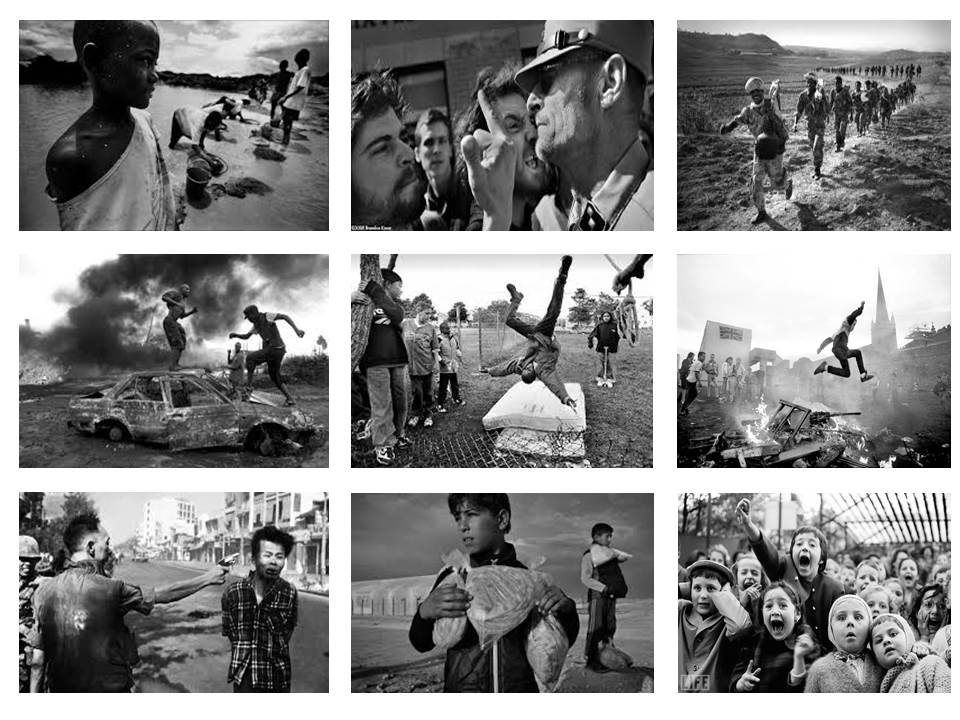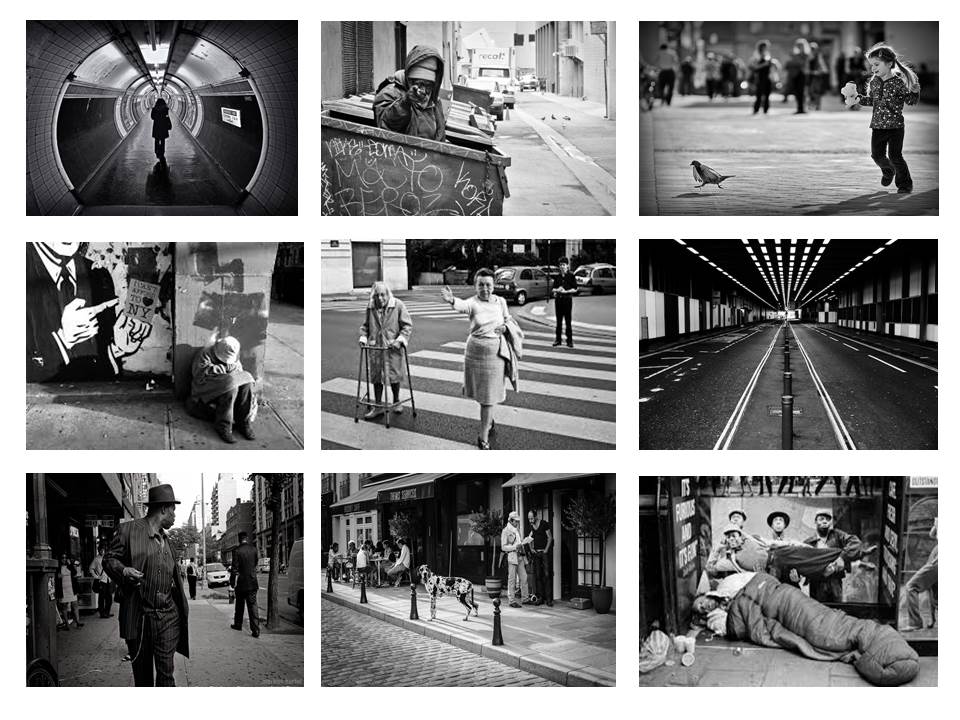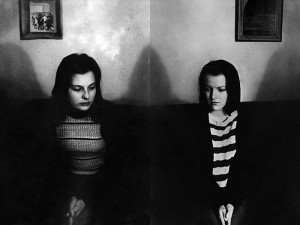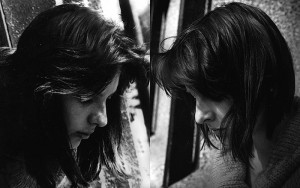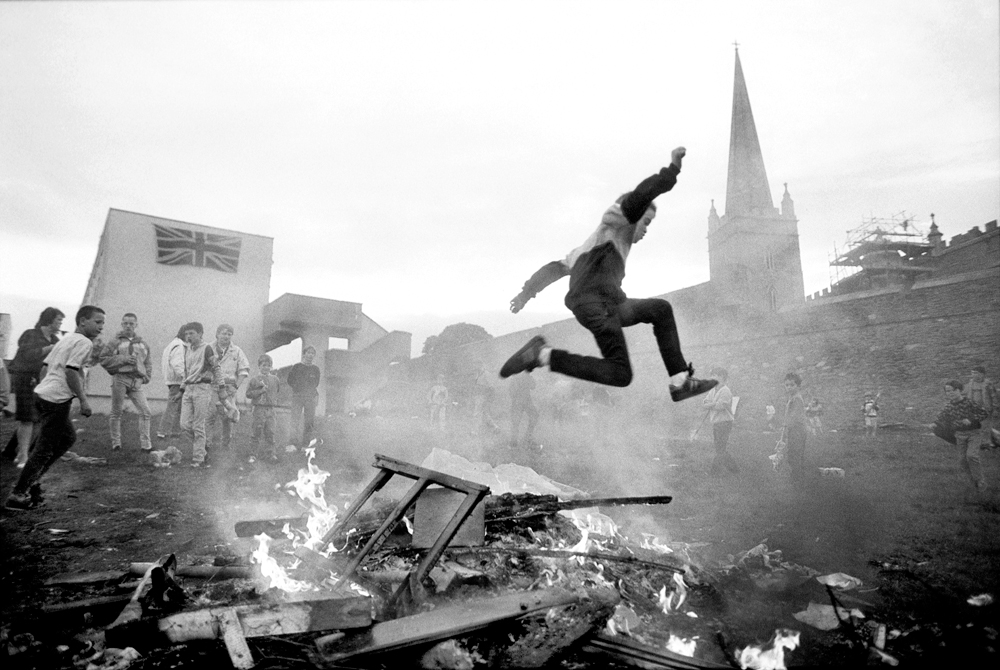In class, we began to watch an episode from the various that were created. The name of the programmer was “The Genius of Photography” and it aired on BBC. From that film I have made the following notes, linked to family. I’ve also incorporated some relevant photographers and their views on ‘family’ photography and the tips they gave.
In the past, photographing the subject of family was described as being a very introspective and subjective topic. However, as it evolved, it began to turn into a more public subject.
Duane Michals, a famous photographer spoke upon some of his ideas in this film. He stated that the person in control should be the photographer. Before, in the olden days, photography used to make people appear perfect and ‘divine’. They were always depicted in a soft and traditionally beautiful manner. However, Michals wanted to rebel against this in his pictures. He aims to create a more interesting and updated way of capturing families. He saw the other past versions as ‘outdated’ and ventured for a more modern outtake. His goal is to encapsulate people in a candid state. Duane wants to see what’s ‘behind the mask’. Also, the picture should reflect the photographers views. Michal’s photograph’s are very different from any of the the older versions, in that, he likes to reflect the people’s inner beauty. He believe’s that it’s more about the beauty of their personality, rather that their physical aesthetics. Duane also states that portraits don’t depict the true side of people. He says he found it easier to photograph celebrities, as they already have a ‘prepackaged’ personality which they transmit to the world. Michals actually photographed Pablo Picasso, which had a great variety of skills, himself. When Picasso arrived to the set, Michals claimed that he started posing in very generic and definite ways. His stances were unnatural and seemed forced. Duane told him to ‘drop his mask’ and after Picasso relaxed, he captured the most amazing portrait. The picture was raw and real. Duane Michal’s work was normally presented in a Tableaux style. Here’s an example:

Another photographer that appeared in the episode, was Larry Clark. He described himself as an ‘insider’ and not an ‘outsider’. His culture was very different due to the way he grew up, and this impacted the way he viewed things. His work is usually described as a ‘diary’ where he includes a lot of personal and what is called ‘confessional’ work. An example includes:

Nan Goldin, also works similarly to Clark, with a ‘confessional’ photography style. She mainly focuses on subjects that most people would label as ‘outcast’. Her photographs are on drugs, transvestism and transsexuals, which she refers to as ‘the 3rd gender’. She shows a sense of ‘humanity’ and shows these people as being a part of normality. Goldin says that she always see’s them as their visual gender and doesn’t just see them as ‘a man dressed as a woman’ for example. Nan photographs people over many years and at the end of specific projects she may create a slideshow with music playing in the background. Goldin got her inspiration from film-making, where lots of loops are made. Her pictures, to a professionally trained photographer appear to be amateur. Nevertheless, it’s more about the feelings and emotions, rather than the normal conventions. Her images were Vernacular, which is defined as purely amateur.
Goldin’s body of work is all about relationships between her and or others. She wants to show what it’s like ‘maintaining them’. This project contains a few self-portraits. An especially striking one, is where she’s showing bruises from her abusive boyfriend, In this one, she’s laying in bed next to him. This is what she means when she talked about ‘maintaining relationships’.

Nan said that the fact that she’s ‘present in the moment’ and that photograph’s can ‘hold the moment’, is what motivates her to shoot.
The famously crazy, Japanese photographer Nobuyoshi Araki has become known for his very promiscuous work. He became recognised when he published a book of his honeymoon, that contained sexually explicit images of his new wife. The phenomenon book was published in 1971 and he soon got noticed. Araki usually publishes one new book every month, he’s constantly taking pictures. He stated that ‘my photographs help me to remember’. He also gave a tip on how to show the real side of someone, saying ‘you have to be in the mind-set, that you’re going to reveal the person’s emotions’. Araki said that he can capture the past, present and future of a person. A very interesting debate to look at is Japanese VS American photography. In the image below, his wife had fallen asleep in the foetal position:

Richard Billingham used to do art in University and then suddenly changed to the medium of photography. The reason why he did this, is because his work got discovered by an editor. His art, in fact, was rather appalling. But, what gave him the upper-hand of the situations was that he had an artistic eye. During his art degree, Billingham only started to take pictures so that he’d create more ‘detailed’ art drawings. He quoted that: ‘all photography is exploitive’. He does add though, that ‘you should make them (the pictures) so good, that they over-shadow this’. Richard photographed his family, revealing deep and personal moments in their life. He gave the viewers a ‘backstage pass’ to situations that nobody would normally, ever want anyone to see. His poor surroundings and disfigured environment created a very chaotic ambience. Example:

There was a photographer called Sally Mann. She spent her whole motherhood photographing her three children. The main reason why her outcomes were so good, was due to Collaborations. Her kids would have to make the effort and work on their expressions. Essentially, working together with their mum, the photographer.

Finally, Larry Sultan focuses on souvenir work. His photographs are instrumental. He is the complete opposite to Richard Billingham, in that Sultan grew up in a very lavish lifestyle. Sultan always told his customers ‘don’t smile’. It makes the pictures have a ‘different body’ as he described. He also made a point to say that taking pictures of others, may actually reflect you as a person. It’s like a projection of the photographer onto the people, as they’re controlling the situation.














